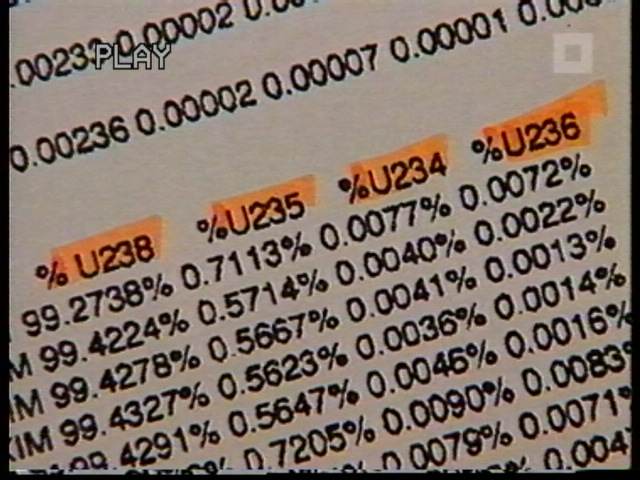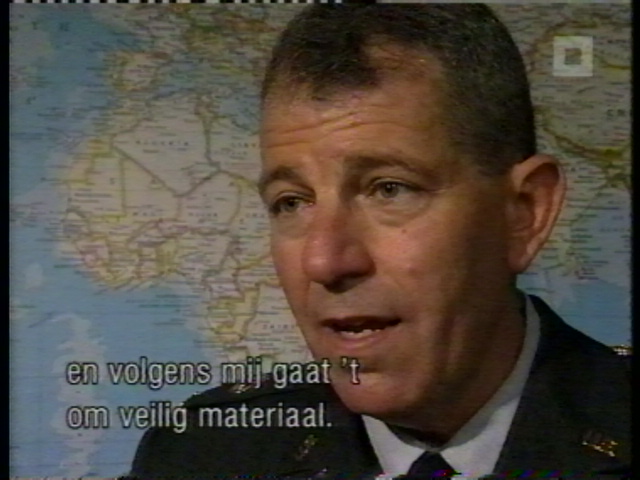Uranium
shells held 'cocktail of nuclear waste'
Subject: [du-list]
Uranium
shells held 'cocktail of nuclear waste'
Date: Sun, 21 Jan 2001 11:40:20 EST
From: Magnu96196@aol.com
Reply-To: du-list@egroups.com
Source:
http://www.sunday-times.co.uk/news/pages/sti/2001/01/21/stinwenws02005.html
=========================================================
Uranium shells held 'cocktail
of nuclear waste'
by Jonathon Carr-Brown
MAINPAGE
SHELLS fired in the Gulf war and Kosovo were made out of material
contaminated by a potentially lethal cocktail of nuclear waste,
according to a book published this week.
The claim, supported by American army and government documents, suggests
that the military in Kosovo and Iraq used depleted uranium (DU) shells
containing traces of elements that indicate the probable presence of
plutonium and other highly toxic nuclear by-products.
The allegations contained in Depleted Uranium: The Invisible War will
embarrass the British and American governments, which have consistently
denied DU is harmful, and enrage veterans of the Gulf and Kosovo.
Martin Messonnier, Frederick Loore and Roger Trilling, the authors
of
the book, are convinced that the Pentagon has misled the world with
claims that its DU is safe.
Until now, the Pentagon has maintained that DU shells are safe because
they contain only mildly radioactive uranium. But the authors claim
the
shells were made with uranium contaminated with more toxic elements.
DU was first used in the Gulf war where the dense metal proved deadly
against Iraqi tanks. The American army is determined to keep the shells
in its arsenal despite the fact the American navy has withdrawn them
on
health grounds.
The authors' claims are based on papers that have led them to three
nuclear plants in Paducah, Kentucky; Portsmouth, Ohio; and Oak Ridge,
Tennessee - the main makers of DU.
Last January Bill Richardson, the energy secretary, accepted after
decades of denials that thousands of workers at Paducah "had been
exposed to radiation and chemicals that produced cancer and early
death".
Most of the victims display symptoms similar to Gulf war veterans -
particularly chronic fatigue and joint pain. The authors claim the
workers had been handling uranium contaminated with plutonium, which
was
then used to make DU.
Documents from August 1999 show that workers at Paducah had been
inhaling plutonium as part of a "flawed government experiment to recycle
used nuclear reactor fuel". The first sign was employees with a string
of cancers in the 1980s.
In October 1999 the energy department reported that "during the process
of making fuel for nuclear reactors and elements for nuclear weapons,
the Paducah gaseous diffusion plant . . . created depleted uranium
potentially containing neptunium and plutonium".
Plutonium can cause cancer if ingested even in minute quantities. What
the workers at Paducah and its sister plants were dealing with were
recycled uranium stocks already contaminated during the enrichment
process at other nuclear plants.
The workers, like the soldiers in Iraq and Kosovo, were not equipped
to
deal with these hazards. Paducah was designed to handle uranium, not
plutonium, which is about 100,000 times more radioactive per gram.
Last week United Nations officials investigating the effects of DU
in
Kosovo confirmed they had found traces of elements indicating plutonium.
According to the authors, the only possible source for DU containing
plutonium are Paducah, Portsmouth and Oak Ridge, which used the
contaminated uranium.
MAINPAGE
=========================================================


Traces of U236 prove there is nuclear waste from a nuclear reactor
mixed with the DU in
the projectile. This means: Plutonium and Neptunium are also present.
These measurements are done for dr. Asaf Durakovic with dust-samples
from South-Iraq